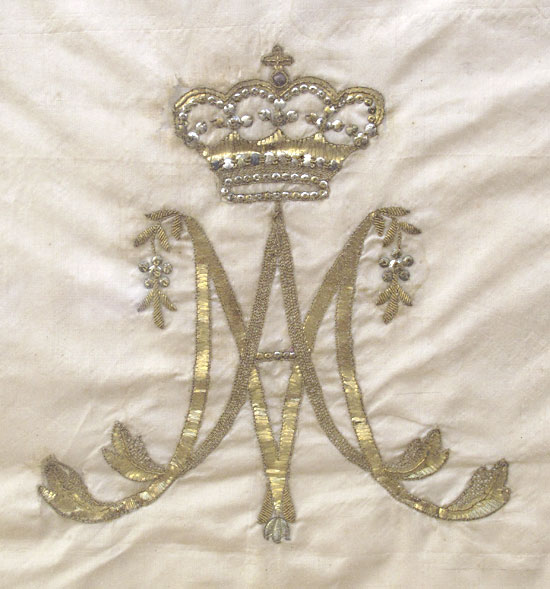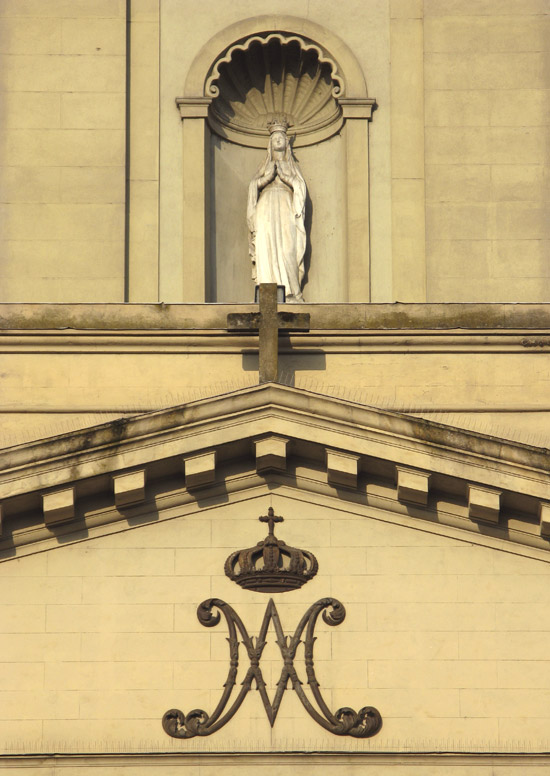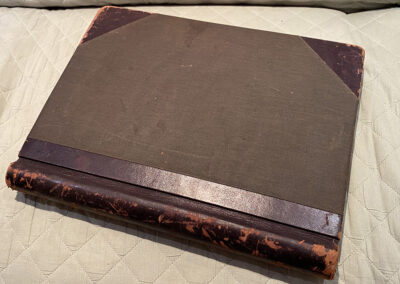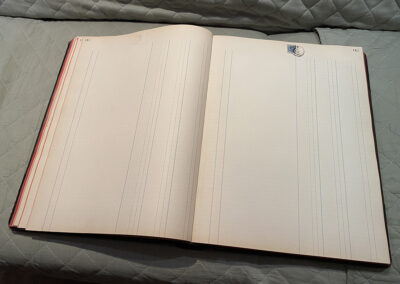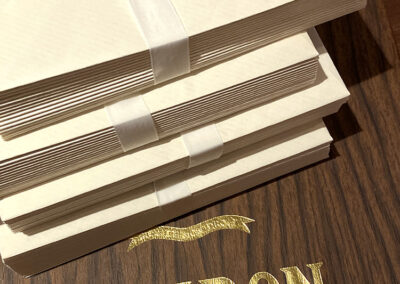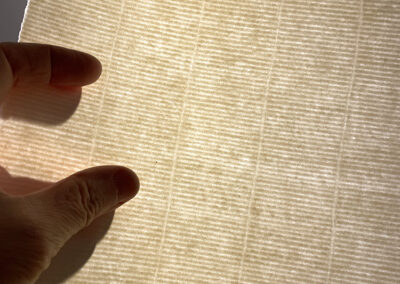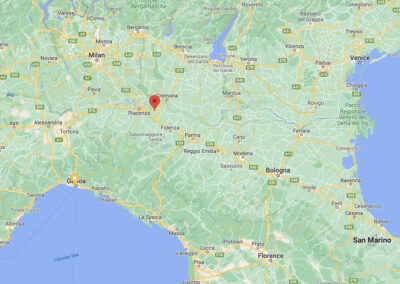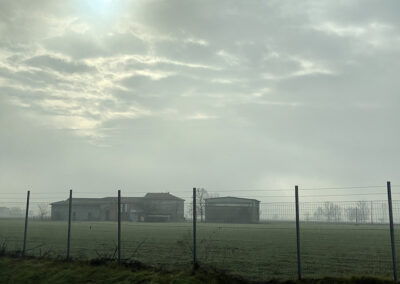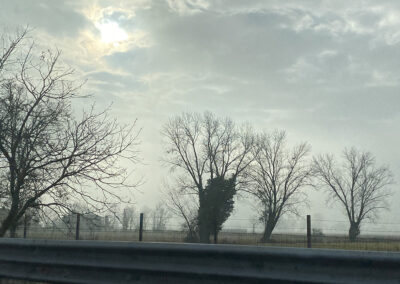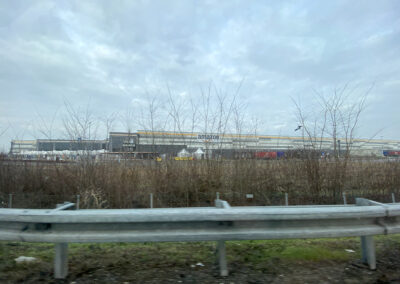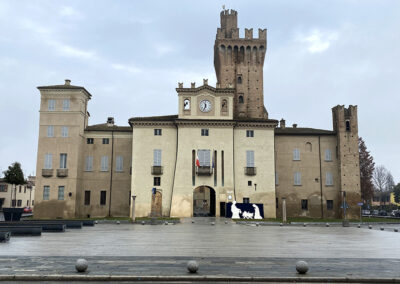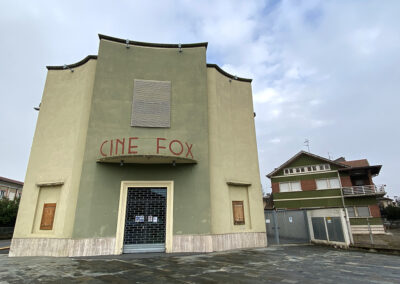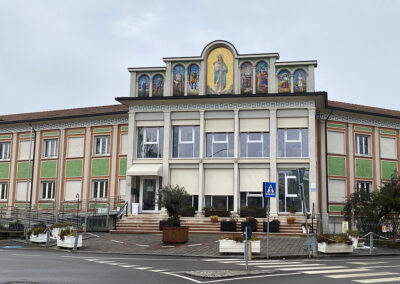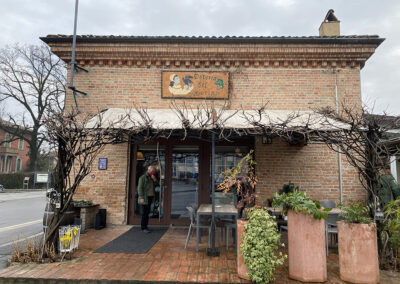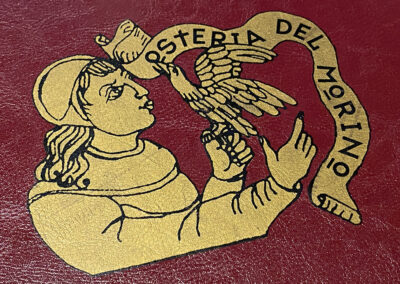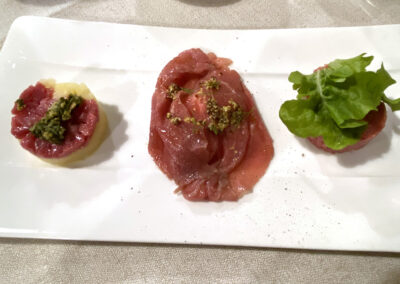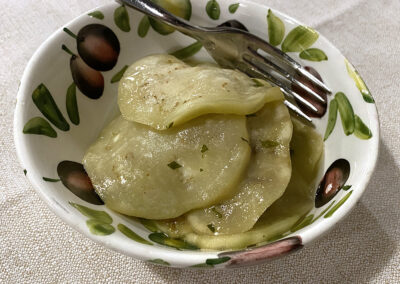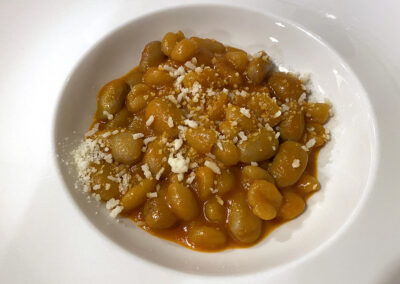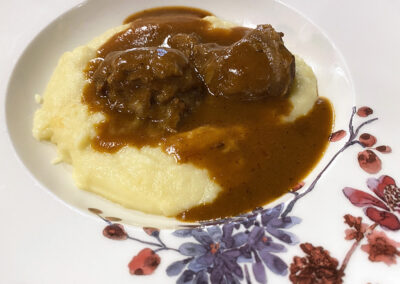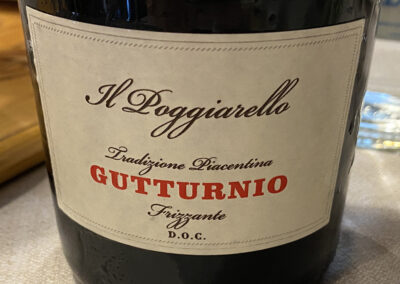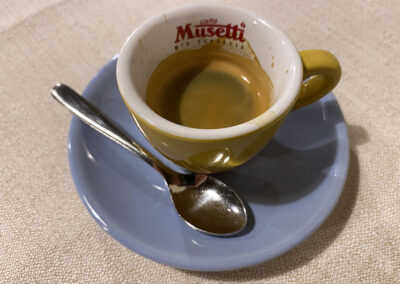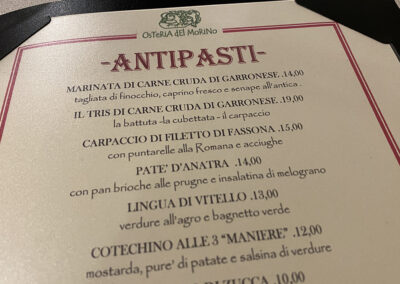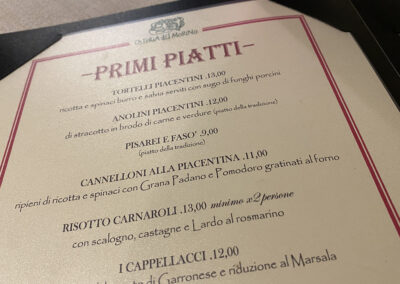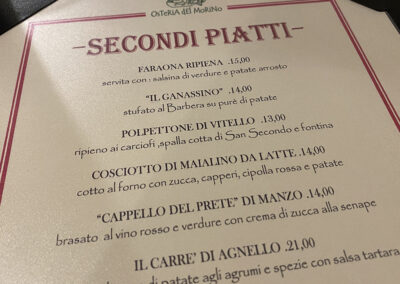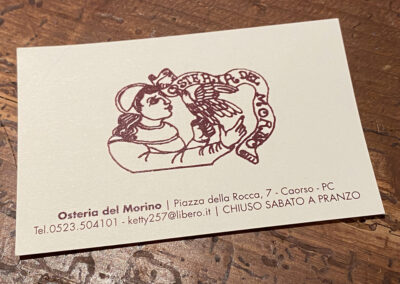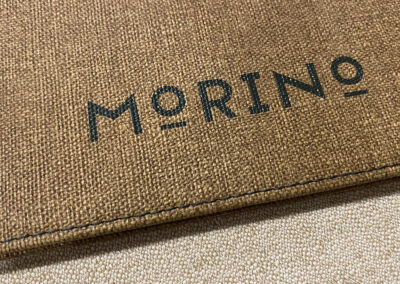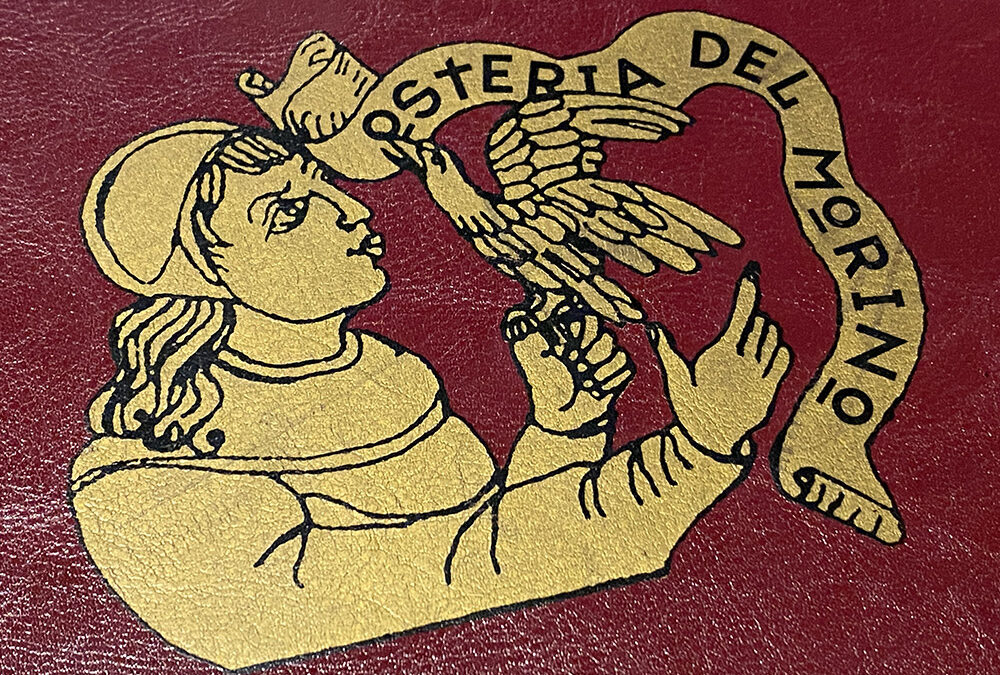
by Maureen | Dec 27, 2021 | Blog, Featured Articles, Food!, Italy, Meals, Milano, Piacenza, Shopping & Markets
Early Sunday mornings, (not bright-and-early because it’s pitch dark out at 6:00 a.m.) are flea market times. Loredano has been a “regular” for decades, and I’ve got the bug when I’m here. Yesterday, the day after Christmas, we headed to the flea market at Assago, on the southwest edge of Milan. The sellers’ stalls were sparse, post-holiday, but we found a few things nonetheless. I got an old, leather-bound, very heavy, blank ledger (€20) which may yield fodder for art projects. That book is so big and heavy, it’ll require a suitcase all on its own! And I brought home a beautiful boxed set of handmade paper stationery, labeled “London” (€5), each bundle of envelopes tied with a white silk ribbon. I will use these papers for special letters, and maybe even do some painting on that gorgeous paper.
From Assago, we tried for San Donato, this time on the southeast edge of town. Also slim pickin’s at that flea market, we browsed, and walked away empty-handed. Up for a drive, we decided to head east, to Caorso, in the Province of Piacenza, Region of Emilia-Romagna. (Like driving to the next state over.) Caorso is almost halfway between Milan and Bologna, not far from Parma. It was a foggy drive in the countryside, with farmlands and abandoned buildings from long ago in the muted, roadside scenes… plus a giant Amazon warehouse.
We arrived in the little town of Caorso, stopped to ask a couple of locals where the flea market was, and they told us that because it was the feast day of Santo Stefano, there was no flea market. Hmm. Now what? In the historic center of town, we stopped across from the Piazza della Rocca Mandelli, a renaissance castle; the theater that caught my eye, Cine Fox; and Casa La Madonnina, an elder care residence.
It was almost noon, a little early by Italian standards to stop for lunch. We saw a man walking along the street, stopped and told him we’d like to find a restaurant serving foods typical to the region. Where would he recommend having a meal?
Absolutely the best choice, he said, was Osteria del Morino. (@osteriadelmorinocaorso) He was right. A half block away, we called to check availability. Yes! There was space for two. (By the time we left two hours later, the place was packed. Amazing that we had gotten a table.) (Of course, named “Morino”, how could we go wrong?)
From the outside, the place looked small and worth little mention. But inside, we found the place expansive, charming, and comfortably-yet-beautifully decorated. We were seated in the upstairs balcony.
Always choose from the local specialties. In Italy, you can go 50 kilometres and find a completely different food culture, each area with it’s own traditional recipes. Ask for those! (Please don’t fall back on what you “think” is “Italian Food”, what you’re accustomed to ordering back home in the States. I often don’t know what I’m going to get… but that’s the whole point!)
Loredano and I chose, and shared:
- Il tris di Carne Cruda di Garronese – Three different raw preparations of very special, high quality Garronese beef.
- Pisarei e Fasò – “Pasta and beans”. Borlotti beans with bean-sized rounds of firm pasta, in a smooth, tomato-based sauce.
- Melanzane marinate – Marinated Eggplant – Pickled in wine vinegar with olive oil and herbs.
- Il Ganassino – Pig’s cheeks, stewed in Barbera wine, served on mashed potatoes.
- Vino Gutturnio – A lightly bubbly red wine, typical of Piacenza Province.
- Un Caffè Normale – Every meal is finished with a sip of coffee.
Beautiful, handmade writing papers
The “laid” finish of the handmade writing papers
Casa Residenza Anziani La Madonnina
Osteria del Morino exterior
Il tris di Carne Cruda di Garronese
Osteria del Morino antipasti
Osteria del Morino secondi
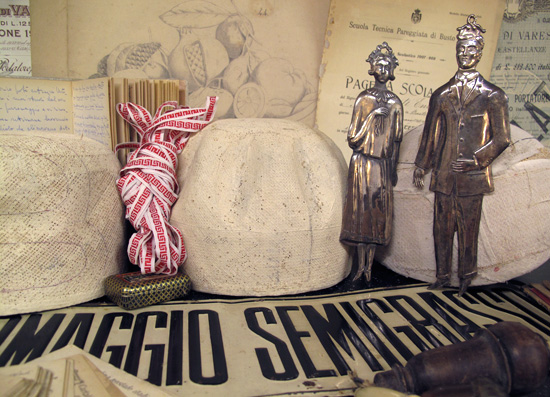
by Maureen | Apr 26, 2010 | Canals, Discoveries, Featured Articles, Journal, Photo of the Day, Photos, Shopping & Markets
The original plan was to head to Firenze for the day (!), but I caught a short, quick cold Friday night and couldn’t dare think of hopping on the train this morning. (I could hardly get out of bed!) After eventually getting up-and-at-em, I dragged myself up to the Naviglio Grande, knowing they were having their monthly Antiques Market. “OK, fine. I’ll go there instead.”
Glad I did! I found some wonderful things. I’m enthralled with old penmanship and typography, fabric and sewing notions, curious boxes and just plain cool things. Here’s my day’s assortment:

Old post cards, religious medals and pen nibs.
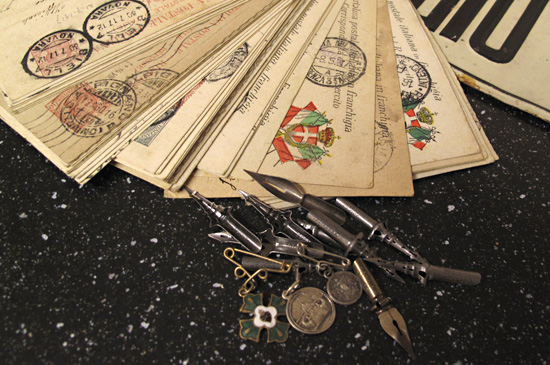
I selected a pencil drawing from 1888, an old travel journal from 1961, report cards from 1907+, a cheese sign, decorative cloth tape, “money substitute papers” from the Comune di Varese from 1926 and some hat forms from Genova.
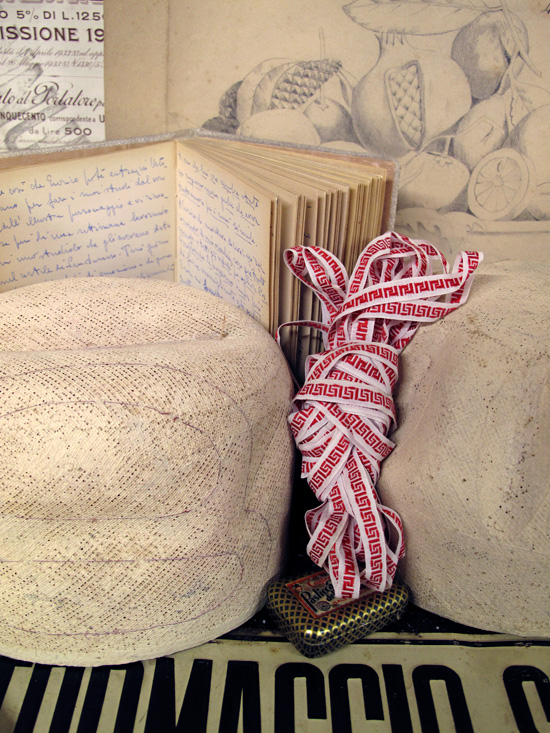
A bundle of 100-year-old postcards and a Superman school journal from 1980 were included in my day’s treasures. (1980 was 30 years ago! Wow.)
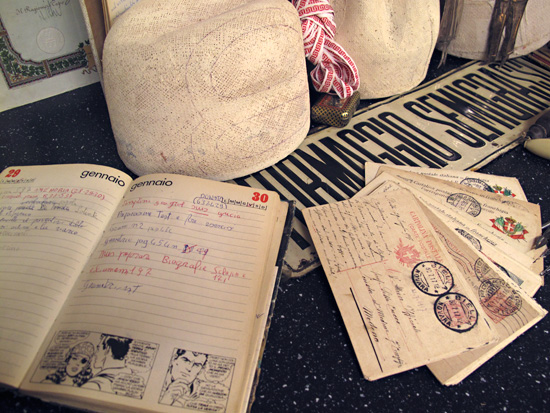
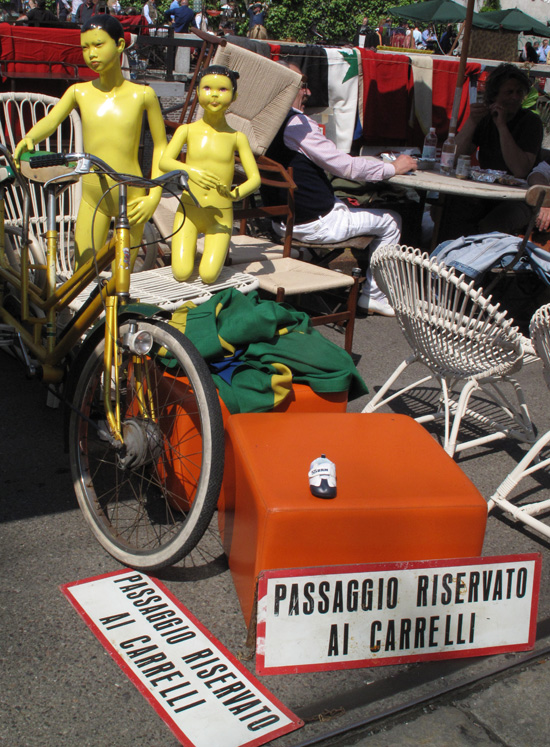
by Maureen | Apr 26, 2010 | Canals, Discoveries, Featured Articles, Journal, People, Photo of the Day, Photos, Shopping & Markets
On the last Sunday of the month, one can browse Antiques and Flea-Market-Finds for as far as the eye can see (2 kilometers), on both sides of the Naviglio Grande, the Grand Canal. (This canal intersects with the Naviglio Pavese, the one I ride my bike along.)
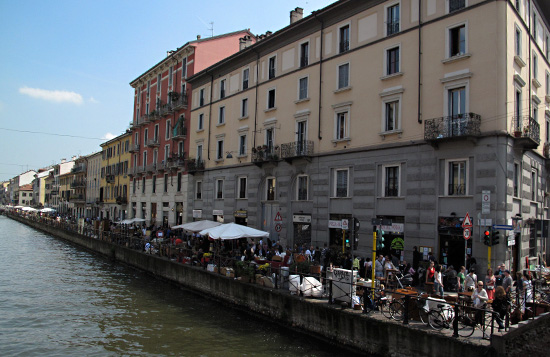
.
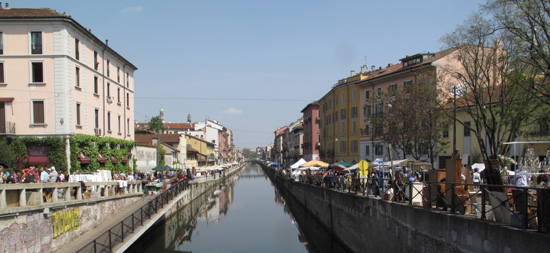
.

There is still some limited boat traffic along the canal when they’ve let the water in.
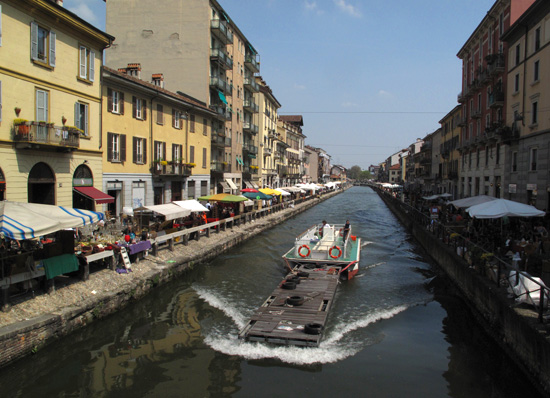
The antique sellers’ stalls also stretch far out into the side streets that branch off of the canal.
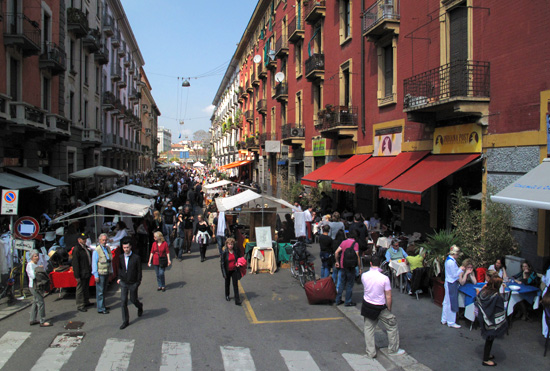
Linens? Oh yes. I find plenty. And they’re gorgeous. And the sellers know what they have and charge prices accordingly. There are few, if any, “steals” here. But the high quality linen and cotton, with the embroidery and open-work stitching, are superb examples of the old European linens. (I would love to buy them all up… but for what?)
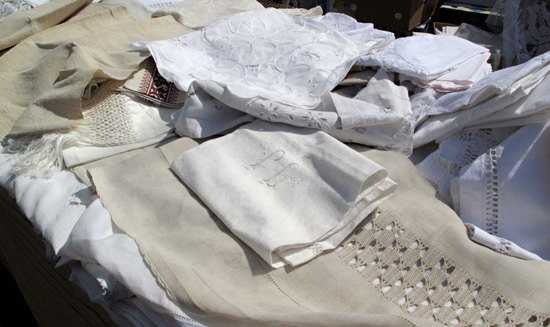
.
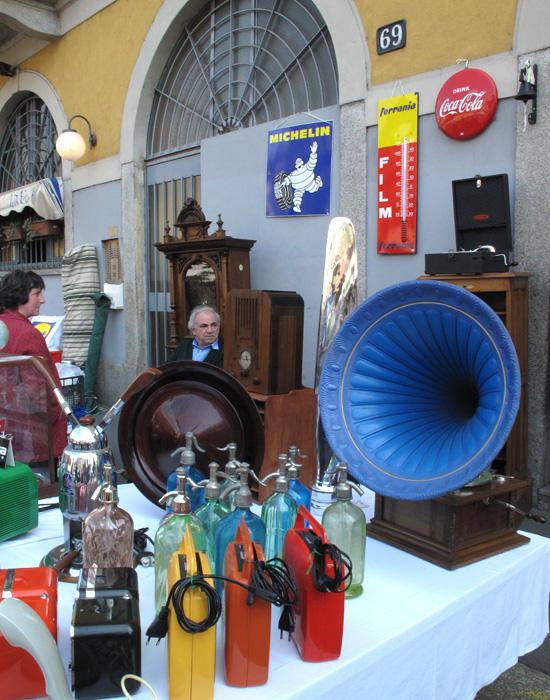
.
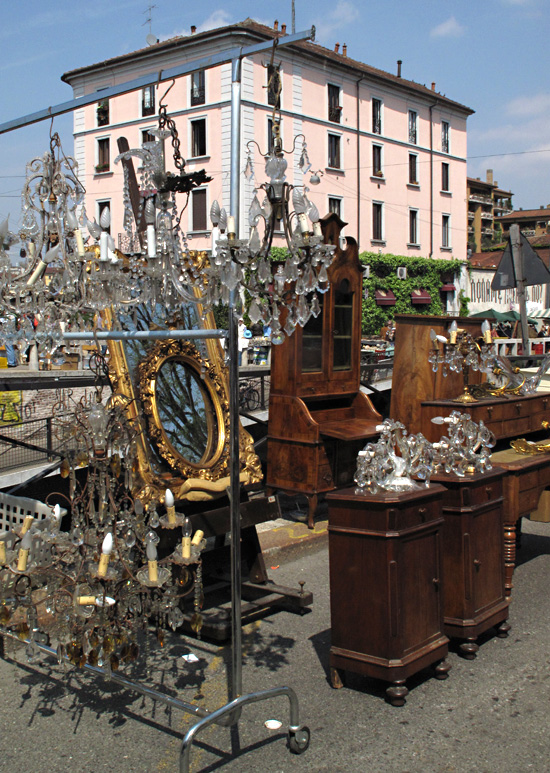
.
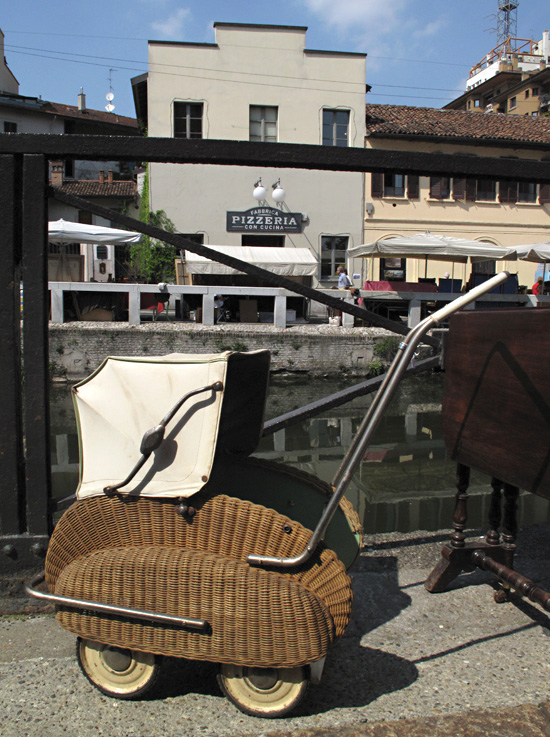
.
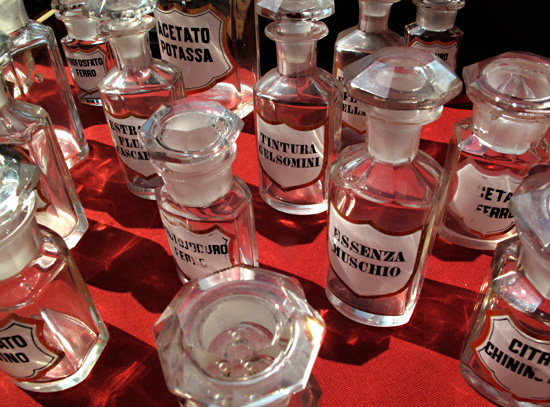
Beautiful, finely-crafted instruments of all sorts! The asking price of this Astrolabe was 700 Euro. (Cough, cough. Roughly $1000 right now.) But it was lovely.
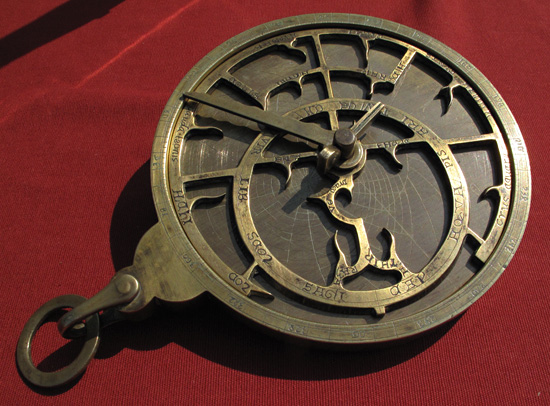
I don’t even know what this Parisian instrument is.
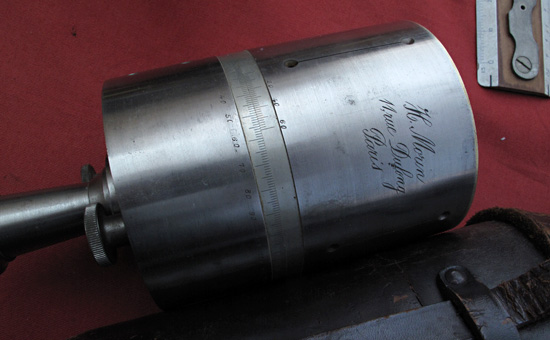
These look like porcelain portraits of Mao and his family.
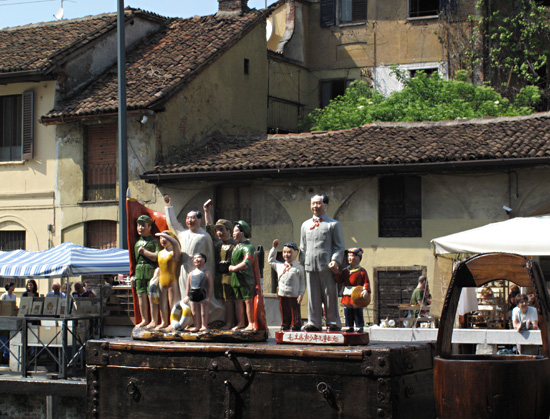
An interesting assortment of portraits.
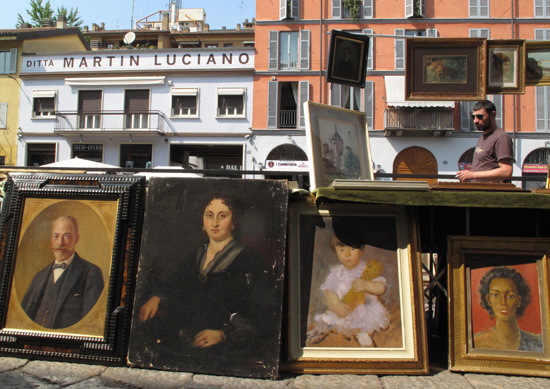
It is startling to me how often I see the American flag, or some representation of it.
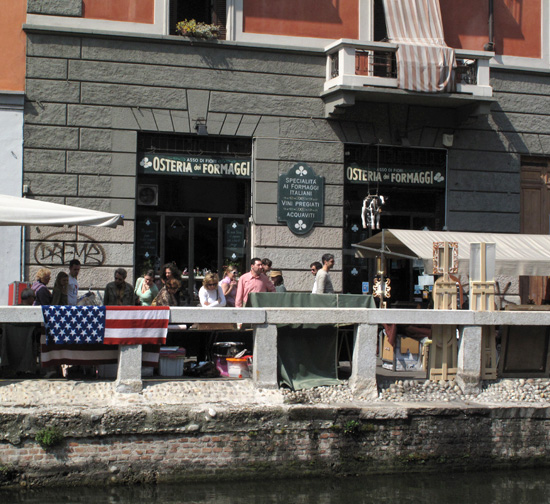
Isn’t this luggage out of the stereotypical “Italian Holiday Travel Movie”?
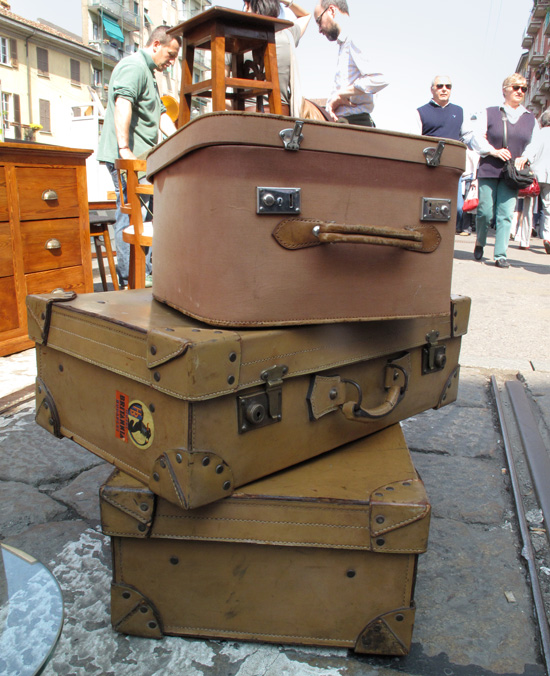
The dog matches the upholstery. I missed him at first.
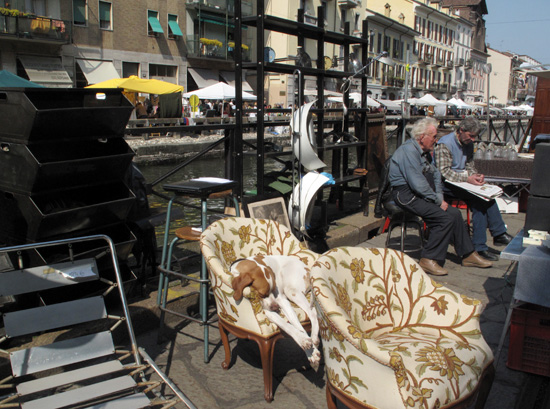
.
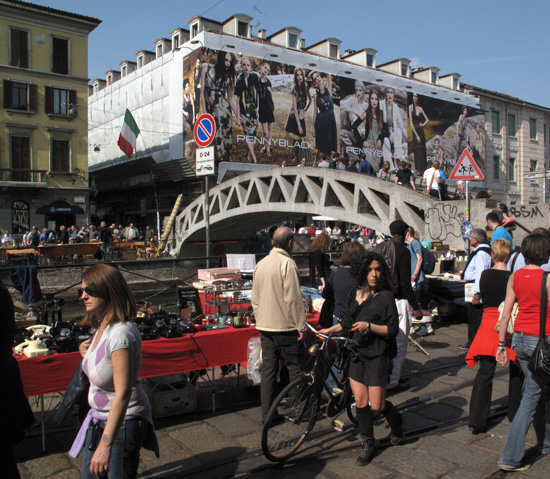
Smile. I’m on Candid Camera (for my Seester.)
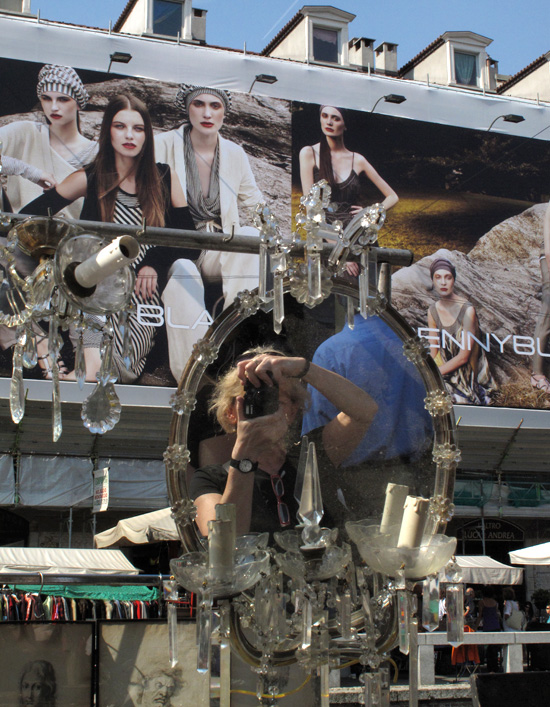
.
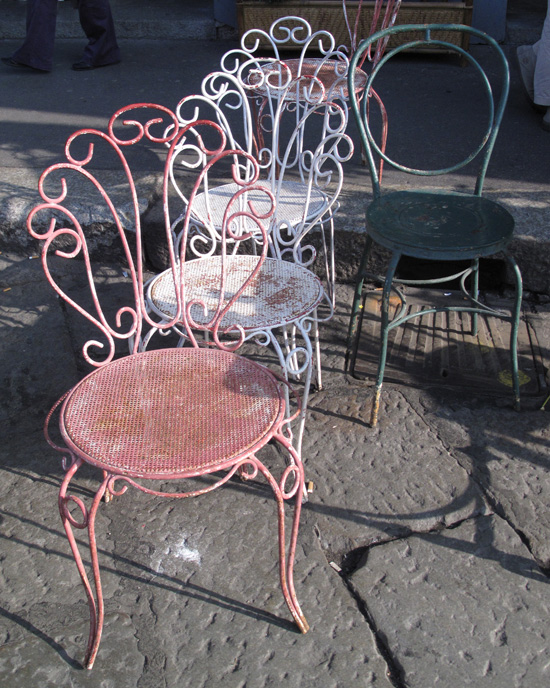
This guy sold horse figures of every sort.
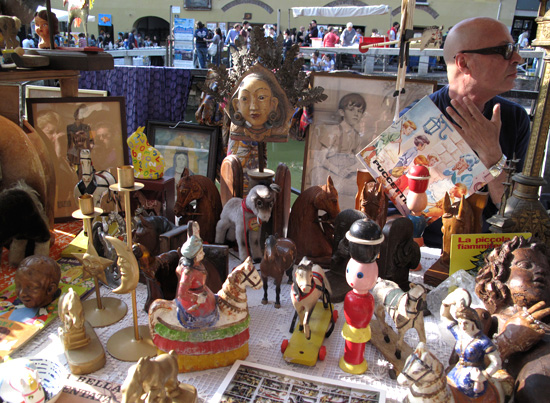
I had been walking around for hours and stumbled upon some finds. “How much for this group of papers and books?” “50 Euro.” “How about 40?” How about 45 and you let me buy you a drink.” I laughed. It caught me completely by surprise. I bought the papers and books for 45 Euro and Graziano and I stepped 10 feet across the cobblestone and had a glass of cold white wine at a Sushi Bar on a hot afternoon and talked for a little while. So funny. But it was a pleasant and charming break.
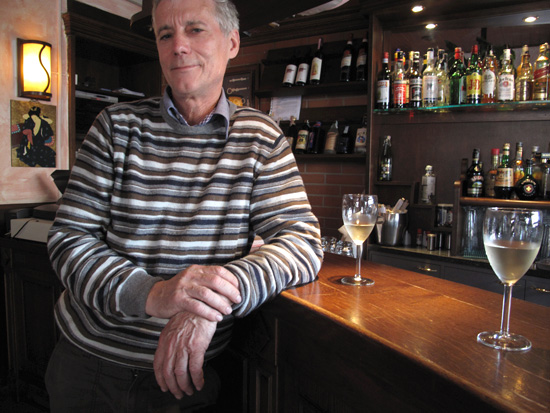
Cool hat box. (Cool typography.)
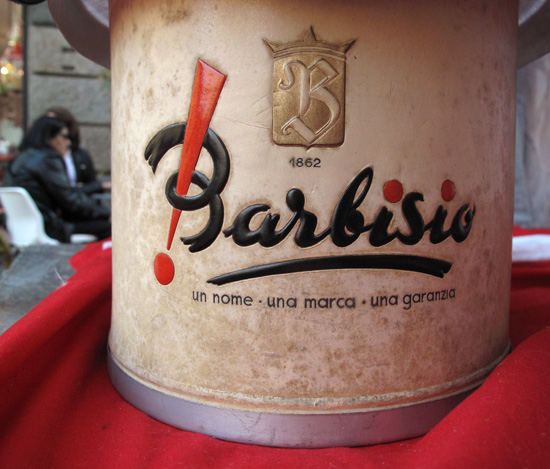
As the warm afternoon waned, the cafés started to fill with people enjoying the Milanese aperitivo. The musicians showed up in the old Vicolo dei Lavandai, the washing station of the 19th century where women gathered to scour their clothes against washboard stones as their wash water flowed off into the canal.
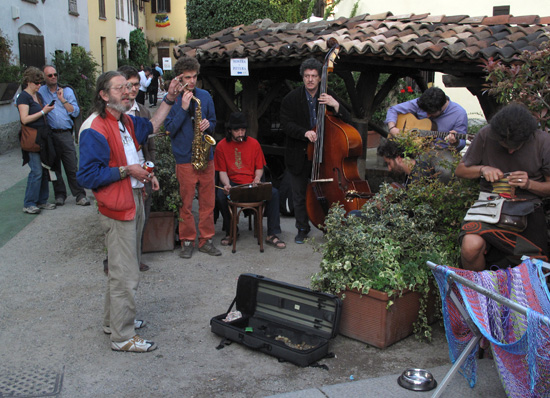
Who’da thought I’d see this?! Wait! I should have bought the one a few issues back: Settembre 1957!
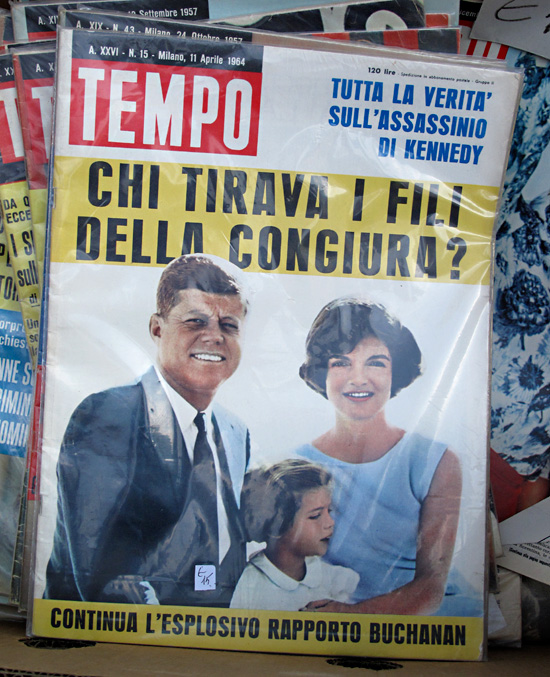
Packing up to go home, this man still wore hat, bow tie and white coat as he packed his lamps into a salami box.
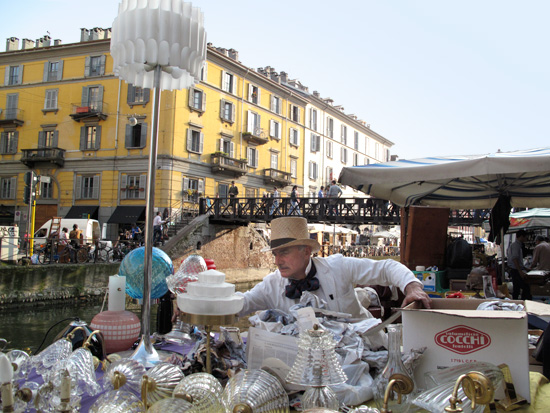
So now, do you have an idea of what’s for sale at an Italian Antique/Flea Market?
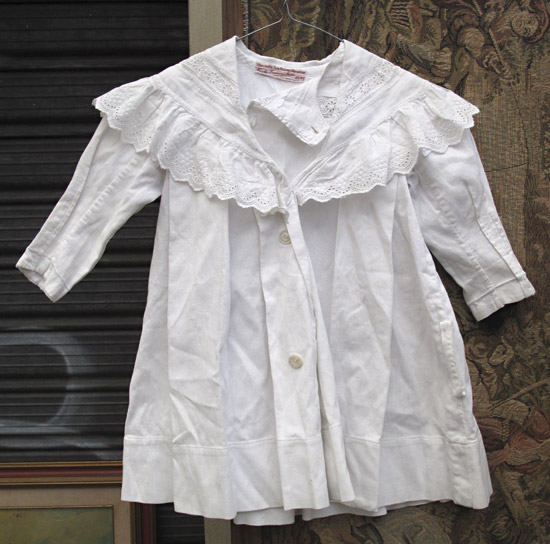
by Maureen | Mar 30, 2010 | Featured Articles, Firenze, Incredible Locations, Journal, Photos, Shopping & Markets
A month ago I was given a hot lead from a girlfriend in Seattle about flea markets in Firenze. What I uncovered through some digging was that the “hottest” market happens on the last Sunday of the month, in the Piazza dei Ciompi, just a few blocks’ walk east of the Piazza del Duomo. OK. That little fact determined the timing of my return visit to Firenze.
I even set the alarm Sunday morning(!), ate a quick breakfast and started walking the mile to the piazza. Along the way, I kept seeing people carrying branches and scratched my head over that. Hmm. Oh! It was Palm Sunday but they were carrying olive branches, not palms! I stepped into the Basilica della Santissima Annunziata mere moments before mass started and witnessed the procession of priests and parishioners.
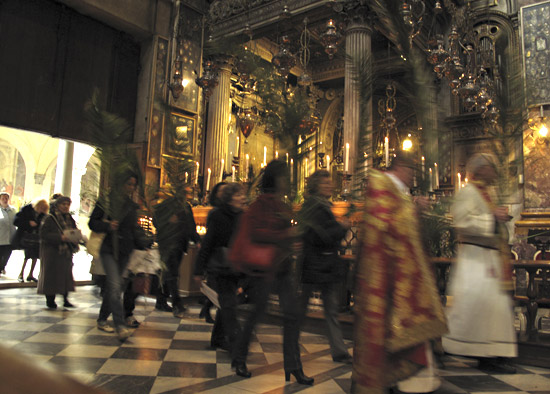
The portico between the church and the “cloister of the dead” offered a heaping bale of olive branches, so I plucked a few little twigs to carry in my pocket, then continued my mile walk.
When I arrived at the Piazza dei Ciompi, I found many of the things I expected AND I found most everything I was looking for. On the last Sunday of the month, the flea market spills out into the side streets, populated by many of the local antiques dealers surrounding the piazza. There are the vendors that know what they have and charge high prices accordingly. And there are those that have a mixed pile of junky tidbits with a “treasure” tucked in here and there. The concept must be universal among flea markets and swap meets.
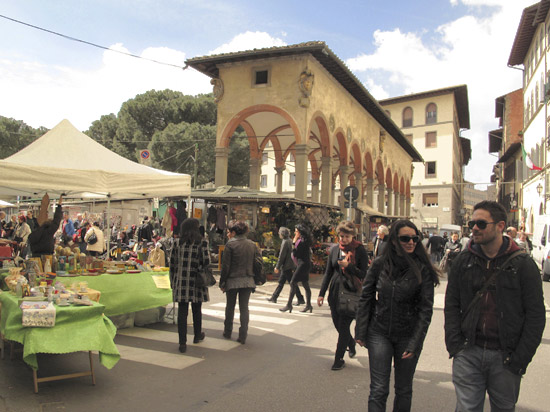
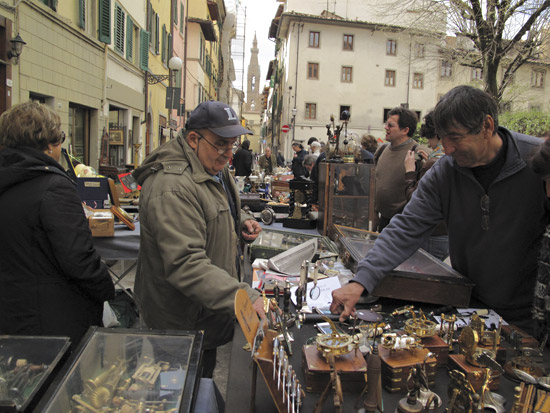
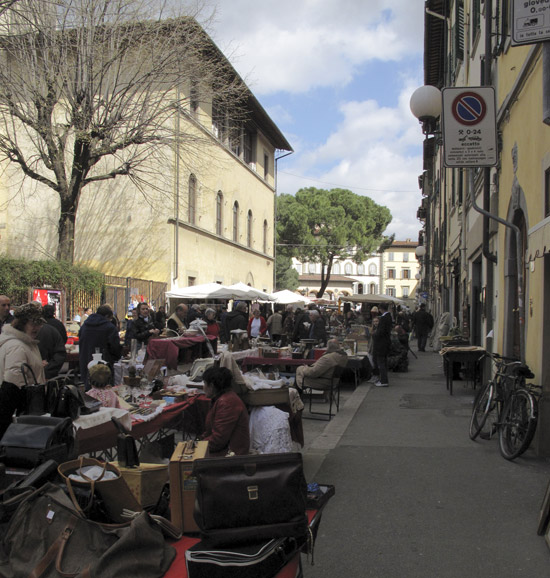
Of course there were iron pieces, linens, books, figurines, clothing, costume jewelry, housewares and miscellanea. What I went in search of were red-stitched linens (thinking of my great, great grandmother and Frette linens) and old penmanship guidebooks. I found both! What I didn’t find are the meat and milk signs like I’ve seen hanging outside markets around the country. I’d gladly hang them outside my door at home in Seattle!
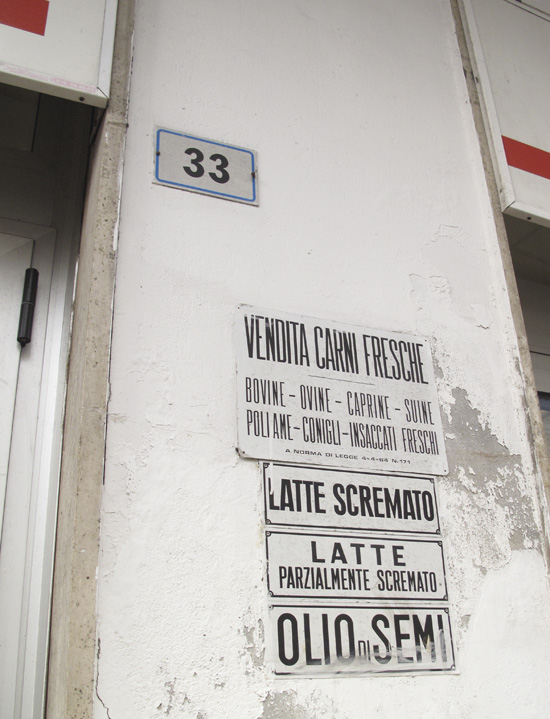
Look at these hat forms! The vendor had about a dozen of them. Many different hat shapes. Beautifully-sculpted hardwood! If I remember right, they were selling for about 80 euro each (about $107).
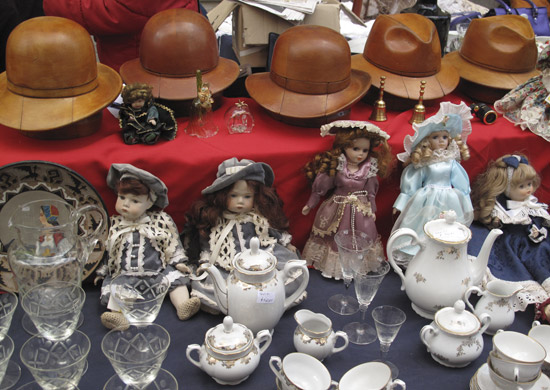
Years ago, both of my Grandmas let me paw through their button boxes and select my favorites. I now have a collection of thousands of buttons, especially mother-of-pearl. I dig into my collection when I’ve sewn something and need just-right buttons. When I saw these boxes full of buttons, I was hopeful, but in the end unwilling to pay 50 cents per pearl button.
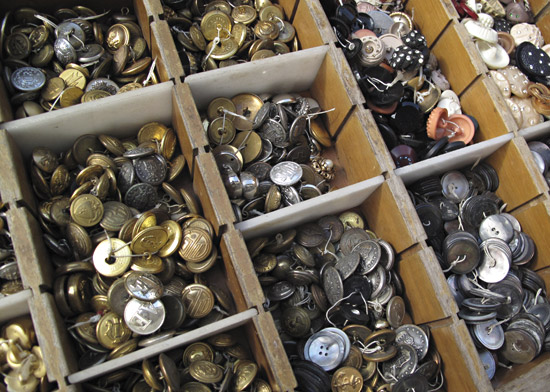
This lovely, white, cotton-with-eyelet dress from Roma was hanging toward the back of one seller’s stall. Darn. It wasn’t for sale. I would have brought it home to little 5-month-old Audrey, whom I haven’t even met yet (!)


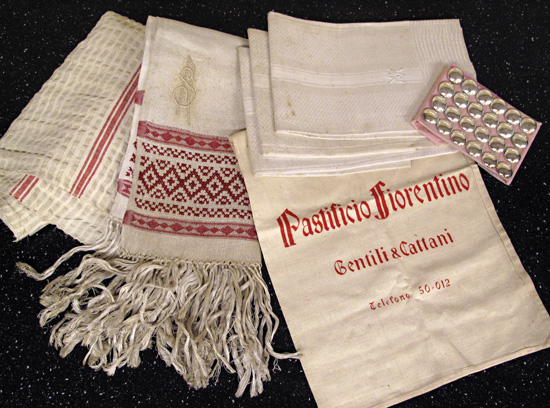
by Maureen | Mar 30, 2010 | Discoveries, Featured Articles, Firenze, Incredible Locations, Journal, Photos, Shopping & Markets
It was as a Camp Fire Girl in fifth grade that I learned to sew by stitching along the lines of binder paper. I’ve been sewing by machine and by hand ever since and fabric is one of the things that makes my heart rate pick up. (Literally.) So, put me in a place where I can find antique fabric, handwork and sewing “notions” and I think I’ve gone to heaven. I passed up some red-on-white cross-stitch samplers from the late 1800s either because they weren’t well-wrought, or the price was higher than I was willing to spring for. I did bring home this little bundle which I will wash up and actually use: embroidered hand towels and napkins, sterling buttons and a muslin flour sack. (I’m easily amused.)

Can you believe I found MY initials embroidered?!
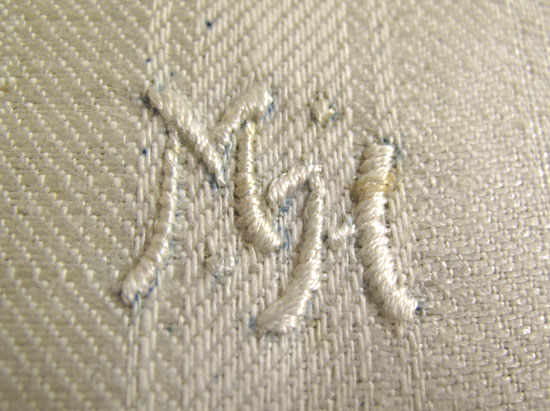
There was a box of about 10 dozen sterling silver buttons produced for Italian military uniforms. Each is marked with “Milano” on the back, which I think is more beautiful than the high-polish front. (I’ll take steel wool to the surface to rough them up, then use them on a special jacket I’ll make.)
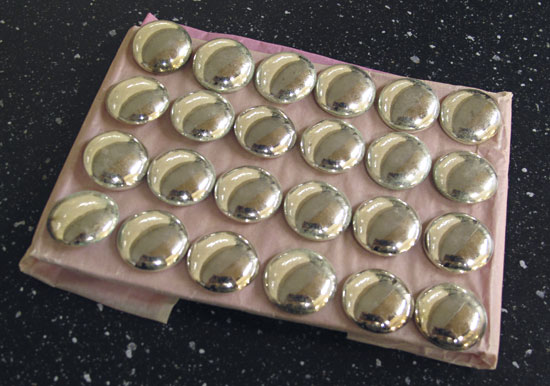
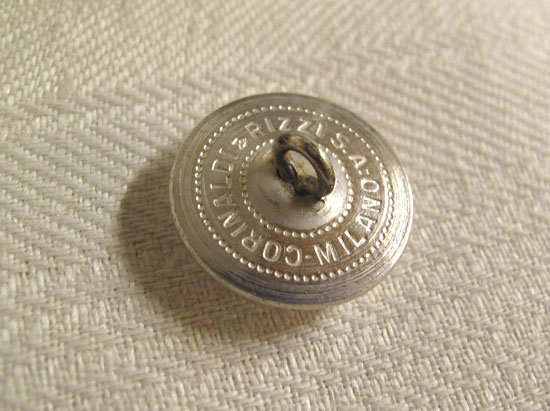
This is elaborate raised stitching on the damask, woven patten.
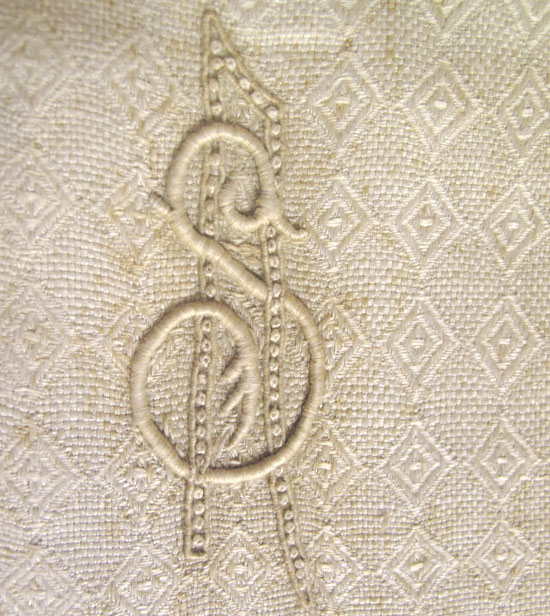
This fringed towel features hand-wrought, counted cross-stitch in between two woven borders.
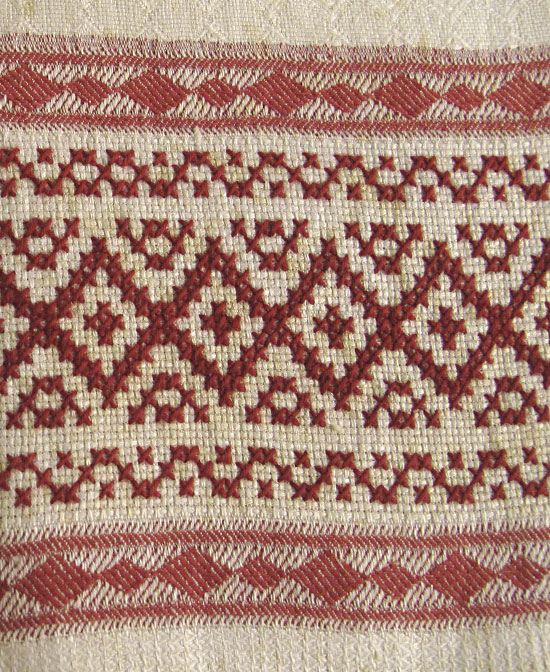
This was a sign on the door of a little shop where they do “polishing, lacquering, restoration and gilding” and sell antique furniture and frames. “Excuse me, would you be willing to sell your sign?”
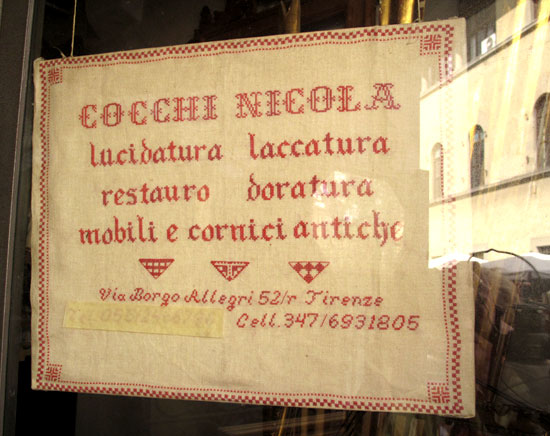
The sellers of this piece were out to lunch. I waited around but they didn’t return, so I simply photographed it. This is a religious symbol for Mary, Mother of God. The “AM” monogram stands for “Ave Maria”. I’ve seen this symbol other places in Italy, such as the cathedral in San Giovanni Valdarno when I was there 2 years ago.
